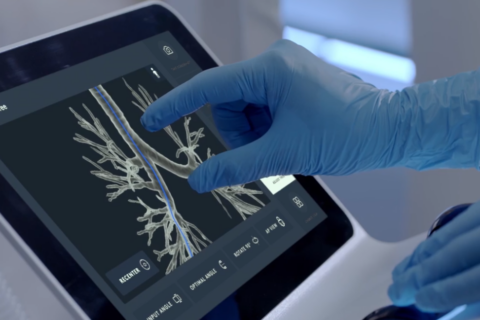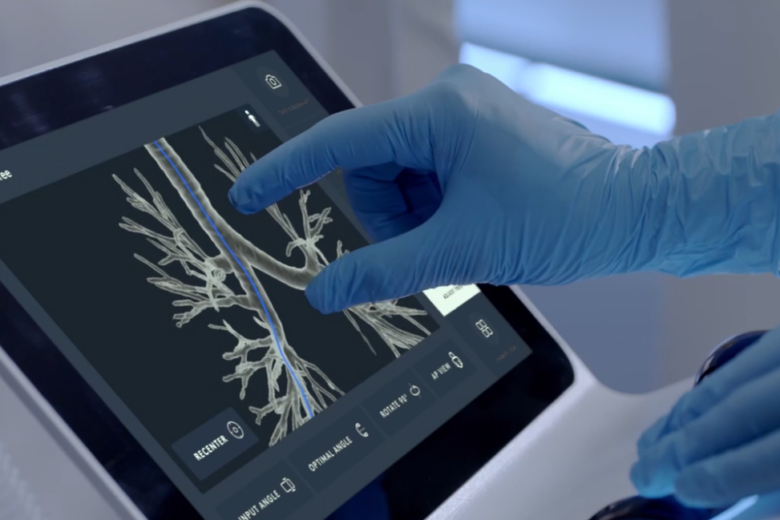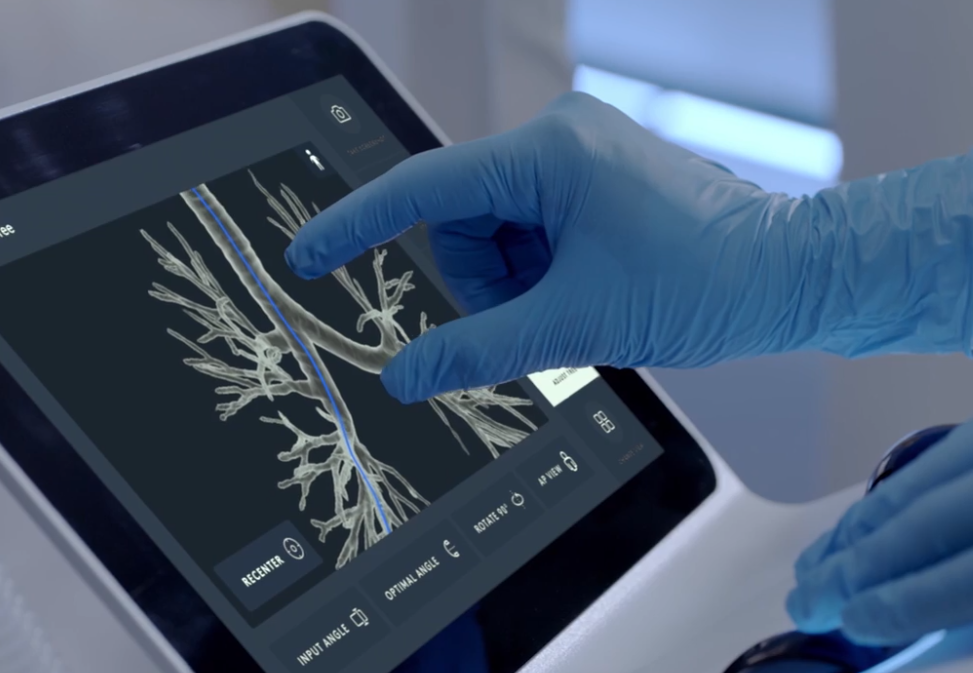Frederick Health Medical Group is outpacing national averages by detecting nearly 40% of lung cancers at Stage 1 with 3D imaging and robotic bronchoscopy.

An ion robotic bronchoscopy system used by Frederick Health.(Courtesy Frederick Health)

An ion robotic bronchoscopy system used by Frederick Health.(Courtesy Frederick Health)
Most lung cancer in the U.S. is diagnosed at Stage 4, after the leading cause of cancer deaths has spread to other parts of the body. However, a Maryland health system is outpacing national averages by detecting nearly 40% of lung cancers at Stage 1.
Frederick Health Medical Group, in Frederick, Maryland, identifies lung cancer early by investigating tiny clues, which enables patients to get to cancer specialists earlier in the process, according to a doctor with the group.
“Lung cancer is a scary thing because it does not cause symptoms until it’s too late,” said Dr. Maurice Smith, thoracic surgeon and medical director for chest surgery with Frederick Health Medical Group.
With new 3D imaging, robotic bronchoscopy and a comprehensive multidisciplinary approach, Frederick Health is diagnosing nearly 40% of lung cancers at Stage 1, surpassing the national average of 27%.
“We’re able to get to these abnormalities in the lung before they get too big,” Smith said.
Doctors and researchers have long known that early diagnosis of lung cancer improves the success of available treatments, and the patient’s quality of life.
With more and more younger patients being diagnosed with lung cancer, advocacy groups have called for earlier screening with low-dose CT scans. Currently, the U.S. Preventive Services Task Force guidelines is limited to adults aged 50 to 80, who have smoked a pack of cigarettes a day for 20 years.
“That’s for patients who are high risk,” Smith said. “The government pays for it for 50 through 80. You don’t necessarily have an abnormality, but you’re trying to screen to see if you do.”
And only approximately 20% of Americans who are eligible for screening get it done on an annual basis.
Most of the lung cancer cases discovered by Frederick Health came when doctors weren’t looking for cancer.
Smith said that of the 130 lung cancers diagnosed at Frederick Health recently, 60% were identified after a CT scan for another reason, and only 40% were discovered during lung cancer screening.
According to the American Cancer Society, the five-year survival rate for non-small cell lung cancer discovered in Stage 1 is 67%. For Stage 4, in which lung cancer has spread to other organs, the five-year survival rate is 12%, although it continues to improve significantly with recent trends in targeted therapies.
Early diagnosis, even though ‘it didn’t blare lung cancer’
Smith said Frederick Health isn’t getting more people in for CT lung cancer screening, but rather capitalizing on CT scans that are done in the emergency room or a physician’s office to deal with everything from a cough to a sprain.
“If you go to the ER department, for the most part you’re going to walk out of there with a CT scan,” Smith said. “The disconnect has been that those CT scans in the ER, those CT scans in the community, were not being followed up on, because it wasn’t flagged as suspicious, because it was a smaller nodule.”
But that’s changed with implementation of ION robotic technology, manufactured by Intuitive, along with advanced 3D imaging.
“We’re able to go after lesions as small as an apple seed,” Smith said.
Now, if a CT scan done in the ER or the office of a Frederick Health provider discovers a nodule that was previously considered too small for concern, a report is automatically forwarded to the center’s incidental pulmonary nodules clinic, which contacts the patient and primary care provider to coordinate follow-up.
It’s cancer: Now what?
New robotic bronchoscopy technology gives surgeons and interventional pulmonologists a way to perform minimally invasive biopsies of lung nodules.
“The traditional bronchoscopy is about the size of your thumb, so it can only navigate to a certain point within your airway,” Smith said. “With our new robotic bronchoscopy, it’s very thin and flexible, so it’s able to reach any point in the lung from the outside.”
During the staging process to determine whether lung cancer has spread, a patient would typically undergo three procedures: a bronchoscopy to retrieve a biopsy, another bronchoscopy after diagnosis to look for spread to lymph nodes in the center of the chest, and finally a lobectomy, or other surgery to remove an early-stage tumor.
“So now, from that first appointment, we are usually getting patients a biopsy within two to three weeks,” Smith said. “From beginning to end, to diagnosis, we’re about three to four weeks, which we’re very excited about.”
Get breaking news and daily headlines delivered to your email inbox by signing up here.
© 2025 WTOP. All Rights Reserved. This website is not intended for users located within the European Economic Area.
